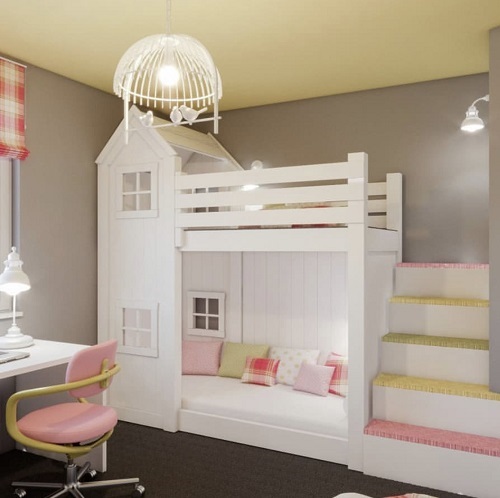What is the meaning of color for children?
In the morning, the morning glow dyes the sky red, bright flowers begin to stretch the tender waist; in the afternoon, the sun through the layers of green leaves, full pool of water ripples; in the evening, the golden sunset asperses the earth, flying butterflies are so brilliant...
But you know what? When a baby is born and opens its eyes for the first time, it cannot immediately enjoy this beauty. scientists tell us that babies are born without a sense of light, and their vision develops more slowly than other senses. Luckily, five days or so after birth, the baby will show a preference for pure red and pure yellow, and be able to correctly distinguish between red and green at about two months, and yellow and green at four months. How could that be? Do the colors have any special meaning for children?

Colors: influence children's mental health and individual character significantly
Eyes are the window through which children can know the world. Colors are important elements of the world, which are easy to attract children's attention, such as red, green, purple and other visual sensitive colors. The experiment of Australian psychologist Richard Werner proves that children, especially preschool children, know, distinguish and choose things based on colors that have strong appeal to vision.
In addition, Dr. Alshuler, a well-known child psychologist in the United States, conducted a year-long survey to children concerning the impacts of colors. His research found that colors have a fixed meaning for children. Generally speaking, children who love yellow tend to be dependent; blue-loving children tend to be selfish; red means strong character and naughty; In addition to being a symbol of love, pink indicates a high sense of aesthetics, elegance and tenderness…… Of course, Dr Arshuler's conclusions are instructive, but they are not absolute. What's more, almost every child likes have a variety of colors, therefore, their personality can not simply belong to a certain type. We should let them freely swim in the colorful world and grow healthily and lively.
Let's grow up happily in a colorful kingdom for children
Children's preference and persistence of colors are not born with, it is formed by family, environment, education and many other factors. This prompts us: think highly of the function of colors. Accordingly, we should consider color elements carefully when choosing furniture, toy, book for children.
1. Color decoration of children's room
On the one hand, we should use bright colors to decorate the children's room; On the other hand, we should use these colors reasonably. Because if colours are too bright, they will stimulate the nervous system of children, leading to visual fatigue and mood swing. Here are some points:
(1) Bright colors should be used for small and easily accessible objects. Bright colors are conducive to rich vision and active thinking. So we can build a sweet and downy environment while stimulating their excitement, arouse their vigor and enthusiasm appropriately.
(2) Change the indoor layout regularly, which is very important for the development of children's aesthetic perception.
(3) Children even can participate in the layout of their own room.

2. Selection of colored toys for children
Games are children's major activities, so the choice of toys is very important.
Children's color sense develops from simple form to complex form. Therefore, for the baby, we should provide toys with bright, solid and simple colors. With the growth of age, parents need to pay attention to increase the diversity of colors, and the development of children's ability to distinguish between mixed colors, intermediate colors, color levels, such as gray, blue-green, yellow-green and so on. In this regard, building blocks, puzzles, Rubik's cube are good choices.
As for the unusual coloring in the child drawing and bold imagination, do not go correcting rigidly. Let them actively explore and master the differences in colors.

3. The full use of nature
Nature is the most colorful field for children. With the increase of the feeling of color, they gradually form strong emotional reaction to the bright sun, blue sky, brilliant mountain and flowers.
It should be noted here that children often cannot directly grasp the overall picture of nature. Therefore, parents should start from individual flowers, leaves and other specific things to cultivate children's color sense, grasp the color transition and change, and gradually enrich their color world.















